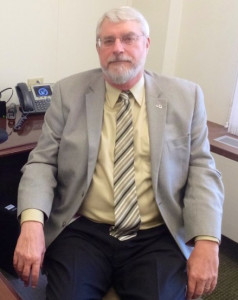Idaho’s SAT math scores dropped in April — and it’s potentially a warning sign, according to a top state education official.
The drop in 11th-graders’ SAT scores compounds another round of troubling news. This spring, only 30 percent of 10th graders received proficient math scores on Idaho’s new statewide exam, the so-called SBAC test that is aligned to the Common Core standards.
The SAT and SBAC results suggest the state may need to rethink its approach to high school math — and preparing high school students for math assessments, said Pete Koehler, state superintendent Sherri Ybarra’s chief deputy.

“It’s telling us that what we’re doing is not necessarily getting to all of our students,” Koehler told Idaho Education News this week.
On Friday, Ybarra’s State Department of Education released results from Idaho’s April 15 “SAT Day,” when 16,792 high school juniors took the college-entrance exam on the state’s nickel. Idaho’s average score came in at 1,353 out of a possible 2,400 points — a 10-point drop from 2014. The change can be linked almost entirely to a 12-point drop in math scores; writing and critical reading scores were almost unchanged.
All told, the average math score dropped from 461 to 449.
The dropoff was widespread. Math scores dropped in 14 of Idaho’s 15 largest districts — Eastern Idaho’s Jefferson School District was the lone exception.
Among the state’s top-performing schools, results were mixed. At Moscow High School — the top-performing traditional high school on SAT Day — the average math score dropped from 530 to 515. At Boise High School, traditionally a high-performing school, average math scores fell from 529 to 503.
Other schools actually saw an increase. Across town from Boise High School, Timberline High School saw math SAT scores increased from 494 to 505. At Meridian Technical Charter High School, average scores went from 540 to 561.

Boise district Superintendent Don Coberly has concerns — and unanswered questions. Across the district, average math scores were virtually unchanged, dropping from 479 to 477 and remaining well above the state average. But scores dropped significantly in the SAT’s geometry section — in Boise, and statewide. Those results are puzzling, he said, since geometry scores improved from 2013 to 2014.
Nampa officials also want to dig into the numbers. The district’s average math score went from 439 to 420. Since the SAT didn’t change from 2014 to 2015, assessment administrator Anita Christenson isn’t sure why results would change as they did.
The district wants to look beyond the high school level, to see if teachers in the elementary schools need to better prepare students for secondary math. And officials also want to track high school math by looking at assessments throughout the year — and results from the Smarter Balanced Assessment Consortium test, or SBAC, the new statewide assessment administered from third grade through high school.
“We don’t want to just use the SAT,” Christenson said.
There is some sense of urgency at the state level, though, because of the low high school math scores on the SBAC. This test, unlike the SAT, is aligned to the Idaho Core Standards. And while overall SBAC scores exceeded first-year expectations, the state’s lowest scores were in high school math.
Ybarra may try to address this in her 2016-17 budget request to legislators.
The request may include some money to hire “core coaches,” who will travel around the state training math teachers, Koehler said. The state already hires nine “core coaches” in ELA, at about $82,000 per position.
The hires were part of an attempt to make literacy a priority. Now, said Koehler, the state needs a similar effort focused on math.
